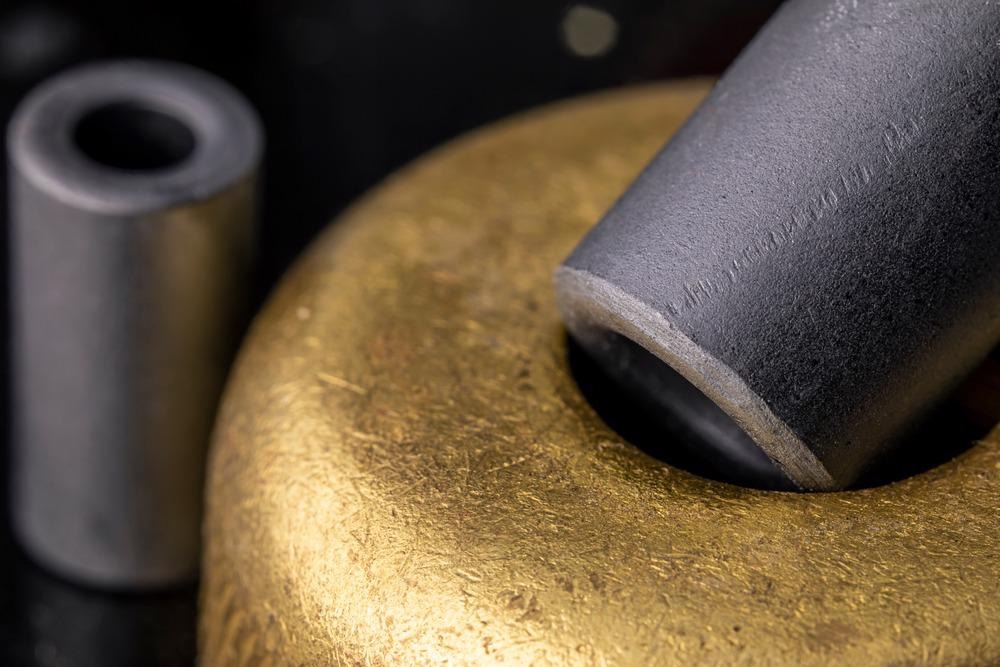A novel finding in the journal Polymers shows that NiZn ferrites featuring mesh architectures have been effectively manufactured from early precursors via three-dimensional (3D) printing and solid-state reactions. This allows for magnetic separation for the use of water purification.

Study: 3D printing of NiZn ferrite architectures with high magnetic performance for efficient magnetic separation. Image Credit: yura borson/Shutterstock.com
Concerns with Water Contamination
Water contamination is a growing concern around the world as a result of increased agricultural and industrial activity, which can lead to a variety of dangerous diseases and disorders. As a result, purifying water is critical, as it is one of humanity's most fundamental requirements. Low-cost materials for removing pollutants from water are particularly desired from a financial standpoint.
Thankfully, the advancement of magnetic separation has thrown light on this field, allowing items to be gathered using a magnetic field. High gradient magnetic separation was created several decades earlier, on this foundation. In general, a magnetic field-sensitive filter can be used to provide a strong magnetic field gradient for effective magnetic separation. As a result, the magnetic filter's design process and qualities are critical for boosting magnetic separation capture efficiency.
Magnetic Separation
Magnetic separation is among the most used beneficiation techniques. It is employed in the separation of minerals with varying magnetic characteristics. Magnetic separation is often a waste management process that uses magnets to extract metal from refuse.
Because the materials are gathered together and separated for processing, it is most frequent in single and mixed streams of recycling. Permanent magnets can now be utilized for separation thanks to the discovery of ceramic materials.
Magnetic separation underwent another evolution by the end of the 1970s, with the advent of three new types of separating becoming famous: overhead magnetic, magnet pulleys, as well as the magnet drum. Since then, these three technologies have been utilized in the recycling business to separate metals from recyclable materials.
Techniques to Purify Water Using NiZn Ferrites as a Magnet Separator
Materials with magnetic properties that have desired designs and excellent quality are becoming increasingly crucial. Three-dimensional (3D) printing and the solid-state reactions were used to successfully construct NiZn ferrites with mesh architectures from empirical precursors in this investigation.
Further Reading: Using Stress to Improve Properties of Multiferroic Materials
The effect of concentrations on the microstructure and mechanical properties of NiZn ferrites has been studied in depth. The magnetization of NiZn ferrites with a zinc concentration of 0.4 was dramatically increased to 77 emu/g, and this was a much higher value than Ni ferrites. This is due not only to the well-known cationic dispersion but also to the extremely high crystallinity of the grain development.
As a result, NiZn ferrites with complicated mesh architectures were used for magnetic separation, and magnetizing force distribution was modeled. Overall, 3D printing of NiZn ferrites is appealing for scaled-up uses, and it also opens up a viable path for magnetic separation.
Magnetic separation using high gradient gradients is a typical approach. Magnetic matrices that play a crucial role in the technique are an important factor of the high gradient magnetic separation process. Magnetic matrices, in general, provide a large magnetic field gradient and, as a result, magnetic force, which is used to separate the different magnetic particles.
Magnetic particles entrapped on the surface of the matrix can be obtained when the outer field is removed. Because of its high permeability and corrosion, resistant, printed NiZn ferrite was utilized as a magnetized matrix instead of many stainless steel wires. After filtering, the built system has the capability to trap Fe3O4 magnetic particles using NiZn ferrite as a magnet filter.
Result of The Process
Because no discernible signal can be identified by ICP, it was discovered that the collecting efficiency of magnetic particles is greater than 99 percent. This is mostly due to NiZn ferrites (0.4 zinc content) with an improved magnetic field gradient, as demonstrated by modeling. While Ni ferrites were used as the magnetic filters, the removal effectiveness was around 90%. The findings show that NiZn ferrites with exceptionally good magnetic characteristics are preferable to Ni ferrites for magnetic separation.
The optimum magnetic field strength in the area of the magnet filaments can reportedly boost magnetic flux density greatly. Furthermore, because magnetic matrices dehomogenize the strong magnetic field, as noted previously, a tiny diameter would result in a significant increase in the magnetic field gradient. As a result, a smaller filament diameter increases the magnetic field gradient and thus the magnetic force.
This may increase the magnetic field gradients to promote magnetic particle capturing, and the collected particles could be recycled once the outward magnetic field is removed. Extrusion-based 3D printing has been suggested to create NiZn ferrite with suitable shapes as magnetic filters.
Magnetic ferrites, on the other hand, are substantially influenced by their microstructure, which is heavily influenced by the production process. The research into the distribution of magnetism and particle capturing capability of printed ferrites is still ongoing.
References
Wei, X., et al. (2021). 3D printing of NiZn ferrite architectures with high magnetic performance for efficient magnetic separation. Journal of the European Ceramic Society. https://www.sciencedirect.com/science/article/pii/S0955221921008803
Disclaimer: The views expressed here are those of the author expressed in their private capacity and do not necessarily represent the views of AZoM.com Limited T/A AZoNetwork the owner and operator of this website. This disclaimer forms part of the Terms and conditions of use of this website.